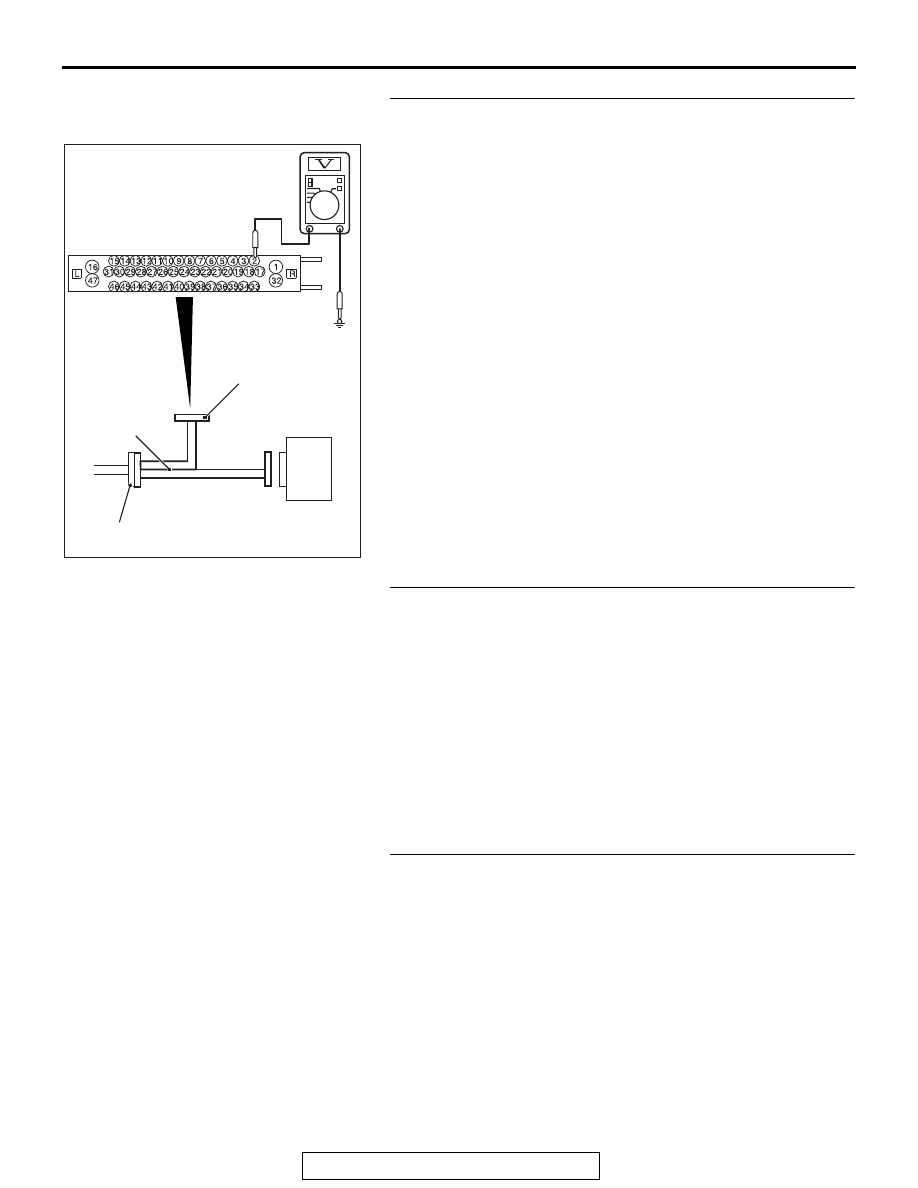Mitsubishi Lancer Evolution X. Manual - part 200

DIAGNOSIS
TSB Revision
ACTIVE STABILITY CONTROL SYSTEM (ASC)
35C-265
STEP 16. Voltage measurement at A-05 ASC-ECU
connector
(1) Disconnect the connector, connect the ASC check harness
(Special tool: MB991997) to the wiring harness-side
connector, and measure the voltage at the special tool
connector side.
NOTE: Do not connect the special tool to ASC-ECU.
(2) Measure the voltage between the terminal No. 2 and the
body ground.
OK: Battery positive voltage
Q: Is the check result normal?
YES : Go to Step 20.
NO : Go to Step 17.
STEP 17. Measure the voltage at the C-309 ETACS-ECU
connector.
(1) Disconnect the connector, and measure at the wiring
harness-side connector.
(2) Measure the voltage between the terminal No. 1 and the
body ground.
OK: Battery positive voltage
Q: Is the check result normal?
YES : Go to Step 18.
NO : Repair the wiring harness between C-309
ETACS-ECU connector terminal No. 1 and the fusible
link No. 34.
STEP 18. Measure the voltage at the C-315 ETACS-ECU
connector.
(1) Without disconnecting the connector, measure by
backprobing.
(2) Measure the voltage between the terminal No. 4 and the
body ground.
OK: Battery positive voltage
Q: Is the check result normal?
YES : Go to Step 20.
NO : Go to Step 19.
AC400817CN
ASC-ECU
MB991997
A-05 ASC-ECU
harness connector
Check harness